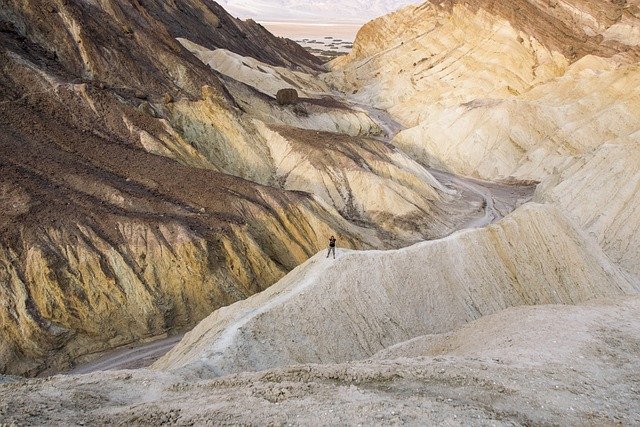Culinary Canyoneering: The Gastronomic Adventure Sweeping Through Slot Canyons
Embark on a thrilling journey where adrenaline-pumping canyoneering meets gourmet gastronomy. Culinary canyoneering, the latest trend captivating adventure seekers and food enthusiasts alike, combines the heart-racing excitement of navigating narrow slot canyons with the pleasure of indulging in meticulously prepared meals amidst nature's most dramatic landscapes. This unique fusion of outdoor adventure and fine dining is redefining experiential travel, offering a feast for both the senses and the soul.

The concept draws inspiration from the long-standing tradition of wilderness cooking, popularized by early explorers and perfected by backcountry enthusiasts. However, culinary canyoneering takes this to new heights, quite literally, by incorporating the challenging sport of canyoneering and infusing it with the refinement of haute cuisine.
The Art of Canyon Cuisine
At the heart of culinary canyoneering lies the innovative approach to food preparation and presentation in extreme environments. Expert chefs, specializing in outdoor cuisine, craft menus that not only tantalize the taste buds but also withstand the rigors of canyon transport. These culinary wizards utilize techniques such as sous-vide cooking, dehydration, and vacuum sealing to create dishes that can be easily packed and later finished on portable stoves or open fires.
Ingredients are carefully selected for their durability and flavor profiles, often showcasing local and foraged elements. Imagine savoring a delicate wild mushroom risotto after rappelling down a 100-foot waterfall, or enjoying a perfectly seared, locally-sourced trout while perched on a narrow ledge overlooking a vast canyon expanse.
Navigating the Challenges
Culinary canyoneering is not without its challenges. The logistics of transporting gourmet ingredients and cooking equipment through narrow passages and over rugged terrain require meticulous planning and specialized gear. Chefs and guides work in tandem to ensure that delicate ingredients and sophisticated kitchen tools survive the journey intact.
Safety is paramount in this extreme dining experience. Participants must be physically fit and possess basic canyoneering skills or be willing to undergo training. Tour operators often provide pre-trip preparation sessions to familiarize guests with the necessary techniques and equipment.
Environmental considerations also play a crucial role. Practitioners of culinary canyoneering adhere to strict Leave No Trace principles, ensuring that these pristine natural environments remain unspoiled for future adventurers.
The Global Culinary Canyoneering Scene
While the American Southwest, with its abundance of slot canyons, remains the epicenter of culinary canyoneering, the trend is gaining traction globally. Regions like the Blue Mountains in Australia, the canyons of the Alps, and even the tropical gorges of Southeast Asia are emerging as hotspots for this unique adventure dining experience.
Each location offers its own distinct flavor profile and culinary traditions, allowing for a diverse range of gastronomic experiences. In Utah’s Zion National Park, for instance, menus might feature Southwestern-inspired cuisine with a modern twist, while expeditions in the Italian Dolomites could showcase Alpine delicacies paired with regional wines.
The Future of Adventure Dining
As the popularity of culinary canyoneering grows, we’re seeing an evolution in both the culinary offerings and the technical aspects of these expeditions. Some tour operators are partnering with Michelin-starred chefs to create truly extraordinary dining experiences in the most unlikely of settings. Others are incorporating elements of foraging and wild food preparation into their itineraries, adding an educational component to the adventure.
Technological advancements are also shaping the future of culinary canyoneering. Lightweight, durable cooking equipment designed specifically for extreme environments is making it easier to prepare complex dishes in challenging conditions. Some forward-thinking operators are even experimenting with portable, solar-powered refrigeration systems to expand the range of ingredients that can be safely transported into the canyons.
Savoring the Experience: Tips for Aspiring Culinary Canyoneers
• Choose the right expedition: Look for operators with experienced guides and chefs who prioritize both safety and culinary excellence.
• Prepare physically: Canyoneering can be physically demanding. Engage in cardio and strength training before your trip.
• Pack smart: Bring quick-dry clothing, sturdy water shoes, and a waterproof camera to document your adventure.
• Embrace the unexpected: Weather and canyon conditions can change rapidly. Be flexible and prepared for last-minute menu or route changes.
• Respect the environment: Follow all Leave No Trace principles and be mindful of your impact on these fragile ecosystems.
• Savor every moment: Take time to appreciate not just the food, but the stunning surroundings and the unique experience of dining in nature’s most dramatic settings.
Culinary canyoneering represents the pinnacle of experiential travel, offering a perfect blend of adventure, gastronomy, and natural wonder. As this trend continues to evolve, it promises to push the boundaries of what’s possible in outdoor dining and adventure tourism. For those seeking a truly unforgettable travel experience that engages all the senses, culinary canyoneering offers a thrilling journey into the heart of nature’s most spectacular landscapes, accompanied by world-class cuisine that elevates the adventure to new heights.





